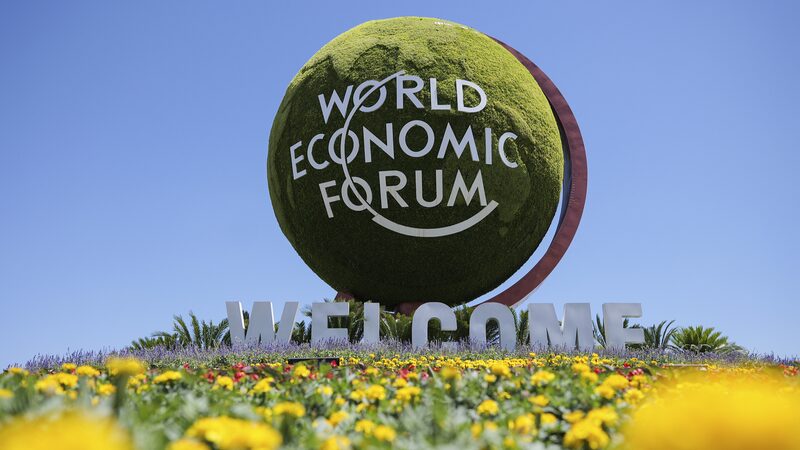As China prepares to enter the Two Sessions period in early March, the global community anticipates the unveiling of the nation's annual growth targets and associated policies. This comes at a time when the world is grappling with a sluggish economic recovery and increasing protectionism.
In a recent symposium on private enterprises, President Xi Jinping emphasized the importance of strengthening development determination and bolstering confidence among private entrepreneurs. He highlighted China's commitment to deepening openness in all aspects, underscoring the vast potential of its 1.4 billion-strong market, which promises extensive opportunities for the private economy.
Resilience and Adaptability
Official data revealed that China's GDP grew by 5 percent year-on-year in 2024, successfully meeting the annual target. Reaching a GDP of 130 trillion yuan ($17.8 trillion) for the first time, China reinforces its position as one of the world's fastest-growing major economies.
Michael Borchmann, former head of the European and International Affairs Department of the federal German state of Hesse, remarked on the rarity of an economy like China's maintaining such growth amidst global economic challenges. He noted, \"This not only shows that the Chinese economy is extremely resilient and adaptable, but also reflects the steady expansion of domestic demand and the results of industrial transformation.\"
The Handelsblatt highlighted positive trends in China's economy, pointing out a 6.1 percent year-on-year increase in value-added industrial output and a 5.3 percent rise in the production and supply of electricity, thermal power, gas, and water.
In 2024, the equipment manufacturing and high-tech manufacturing sectors saw accelerated growth, increasing by 7.7 percent and 8.9 percent respectively. High-technology sectors, including new energy vehicles, industrial robots, and integrated circuit products, critical to China's economic strategy, experienced significant advancements.
Jacqueline Rong, chief China economist at BNP Paribas, identified exports as the biggest bright spot in China's economy last year. Data from the General Administration of Customs in mid-January 2025 showed China's foreign trade reached 43.85 trillion yuan ($6.1 trillion) in 2024, marking a 5 percent year-on-year increase. Exports rose by 7.1 percent to 25.45 trillion yuan, while imports grew by 2.3 percent to 18.39 trillion yuan.
Bloomberg reported that several provincial-level regions in China have set optimistic economic growth targets for 2025, with five provinces aiming for growth rates at or above 5 percent. Beijing, Shanghai, and Guangdong targeted around 5 percent, Zhejiang aimed for around 5.5 percent, and Fujian set a goal of 5 to 5.5 percent. These targets, announced during provincial-level Two Sessions, provide insights into the national economy's prospects in the final year of China's 14th Five-Year Plan (2021-2025).
The International Monetary Fund (IMF) described China's achievement of 5-percent economic growth in 2024 as a surprise for the global economy. Both the IMF and the World Bank have recently raised their forecasts for China's economic growth in 2025, reflecting optimism about its economic outlook.
Effects of Policies
Since September, China has implemented a series of measures to stimulate the economy. These include cuts in market-based benchmark lending rates and banks' reserve requirement ratios, alongside a 10 trillion yuan package in new fiscal funding to address local government debt risks. An expanded trade-in program for consumer goods, such as appliances and automobiles, aims to revive consumption.
Bloomberg noted that these measures have effectively invigorated consumer growth, with China's total retail sales of consumer goods increasing by 3.8 percent year-on-year in the fourth quarter—one of the fastest quarterly growth rates of the year.
Consumption has been a pivotal driver of China's economic growth in recent years. The annual Central Economic Work Conference in December outlined nine economic priorities for 2025, with the foremost being \"vigorously boosting consumption, improving investment efficiency, and expanding domestic market demand on all fronts.\"
Supported by visa-free policies and various incentives, the cultural and tourism sectors are also expected to experience strong growth in 2025. The ongoing winter tourism boom and the Spring Festival holiday have provided a robust start to the year for these sectors.
The National Immigration Administration reported 14.37 million cross-border trips during the Spring Festival holiday season, a 6.3-percent increase from the previous year. Approximately one million of these trips were made by foreign nationals, marking a 22.9-percent year-on-year rise.
During the holiday period, sales at key retail and catering enterprises in China increased by 4.1 percent year-on-year, according to data from the Ministry of Commerce.
The 2025 Spring Festival holiday also set a new milestone for China's thriving film industry, with box office revenue soaring to an unprecedented 9.51 billion yuan ($1.3 billion) between January 28 and February 4, as reported by the China Film Administration.
Reference(s):
China's confidence in steady economic growth for 2025: Key factors
cgtn.com








